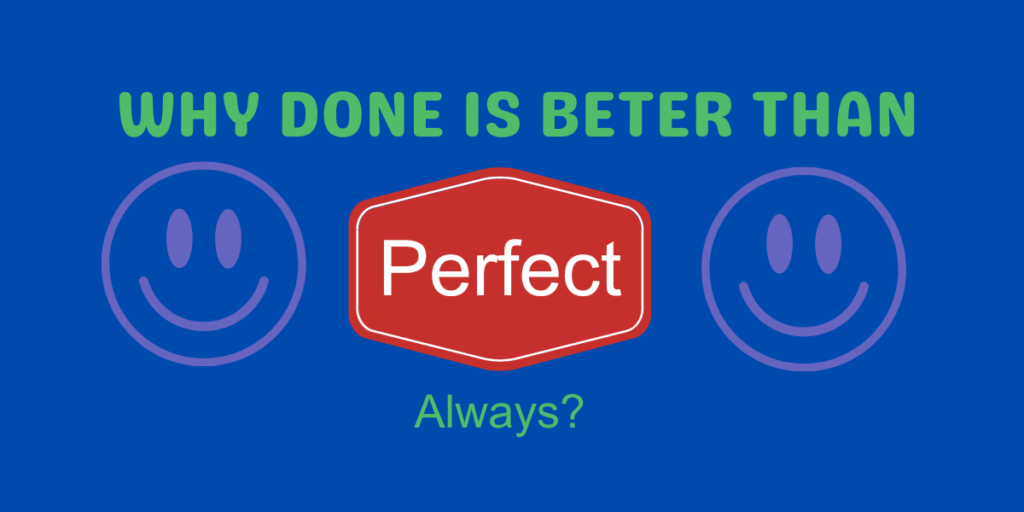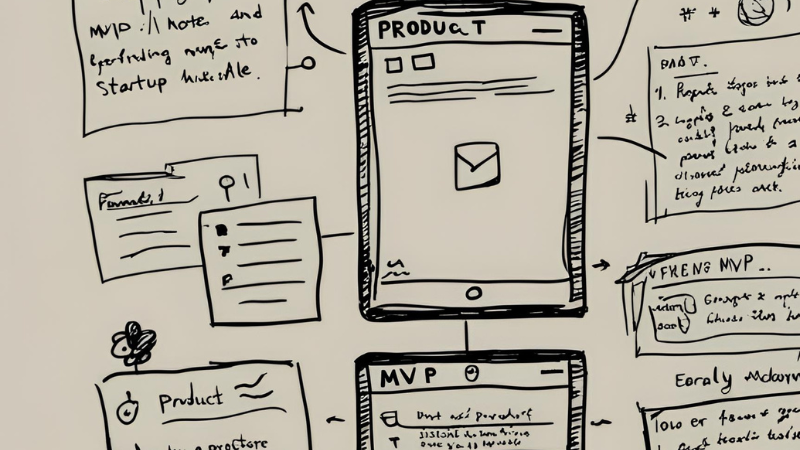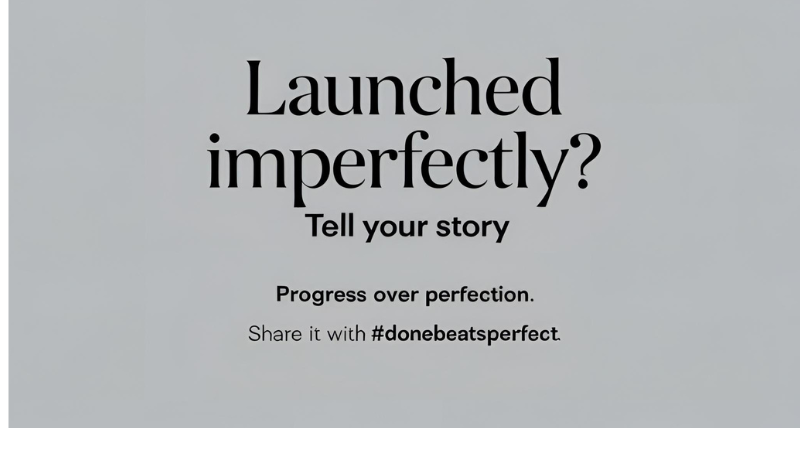
Why done beats ‘perfect’?:
This post explores why done beats perfect. In the fast-paced world of indie development, the pressure to achieve perfection can often lead to paralysis. Many builders fall into the trap of overthinking, which can delay project launches indefinitely. Embracing the idea that ‘done beats perfect’ empowers creators to focus on progress and iteration rather than perfection. This philosophy encourages experimentation and innovation, essential ingredients for success in today’s competitive landscape.
Consider the example of a small startup that took over a year to launch their product. They meticulously refined every feature and design element, but when they finally released it, they found that it didn’t meet the users’ needs. Meanwhile, another team launched a simple version of their product within a month, gathered user feedback, and quickly iterated to create a version that resonated with their audience. This highlights the importance of user-centric development over perfecting internal visions.
The hidden cost of perfection
The hidden costs of perfectionism can manifest in various forms, such as missed market opportunities and diminished creativity. For instance, the longer a developer waits to launch, the more competitors can emerge and capture the market share. Losing the first-mover advantage can drastically impact a project’s potential success. Moreover, the constant tweaking and refining can lead to burnout among team members, stifling innovation and enthusiasm for the project.
The feature list keeps growing, the launch date keeps sliding, and your half‑built product stares back like an unfinished jigsaw. We tell ourselves, “One more tweak and it’ll shine.” Weeks pass with no users, no feedback, and no progress. The truth is, for small teams and solo makers, “done” nearly always beats “perfect.”
Moving towards an MVP mindset can significantly alter the trajectory of a project. By releasing a basic version, teams can gather critical insights through user interactions that inform future development. This approach not only aids in resource allocation but also enhances team morale as they witness their work being utilized in real-world scenarios.
Real-world examples abound that showcase the power of launching early. For instance, Instagram started as a simple check-in app before pivoting to photo sharing based on user feedback. This kind of adaptability is only possible when teams prioritize getting something out there to see how it performs in the real world.
Minimal Viable Product (MVP)

Implementing the 70% rule can be a game-changer for developers. Let’s explore what is the mindset behind ‘done beats perfect‘.
By defining what ‘good enough’ means for a specific project, teams can maintain focus and clarity during development. For example, if the core function of a budgeting app is to allow users to track expenses effectively, ensuring that this feature works seamlessly becomes the primary goal, while additional features can be added later. Setting a quality floor is crucial to avoid user frustration, and this should be a part of every project plan.
Perfectionism feels productive, but it silently drains momentum. Every extra day polishing is a day customers can’t try the tool, a day search engines can’t index it, and a day competitors edge ahead.
The opportunity cost is huge.
• No word‑of‑mouth because no one can use it.
• No real‑world data, so you guess instead of learn.
• No revenue, which means the project must live on your free time.
The Minimum Viable Product (MVP) mindset flips this. Ship the 70 % version, watch people interact, then improve what actually matters.
Real‑world evidence

Airbnb’s first site used grainy photos and a basic checkout flow, yet it proved travelers would pay strangers for a spare mattress. Twitter launched so bare‑bones that it only showed 140‑character texts on a white page. Closer to home, I pushed my first calculator live with clunky styling and zero onboarding. Three users emailed suggestions within forty‑eight hours. Their comments gave me a precise to‑do list, something weeks of solo brainstorming never produced.
How to implement the 70 % Rule to achieve “done beats perfect” mindset?

Using a time-boxed approach to polish can create a sense of urgency that fosters productivity. This technique encourages teams to focus on the most impactful changes rather than getting bogged down in minor details. Effective time management leads to increased efficiency and allows for greater flexibility in response to user feedback.
After launching, the importance of feedback cannot be overstated. Engaging users with simple feedback mechanisms can provide invaluable insights into how a product is received. Taking the time to analyze this feedback helps teams prioritize future developments effectively. Regular updates and transparency about changes foster user trust and encourage ongoing engagement with the product.
Taking action steps today can significantly impact productivity. Setting clear goals, such as launching a feature within a specific time frame, can help teams break the cycle of perfectionism. Moreover, documenting ideas for future features in a parking-lot document can reduce anxiety about forgetting valuable suggestions while maintaining focus on current priorities.
- Define “good enough.” List the core outcome a user must achieve. For a loan calculator, that is “enter numbers → see monthly payment.”
- Set a quality floor. It shouldn’t crash, mis‑calculate, or expose data. Anything beyond that is polish.
- Time‑box the polish. Give yourself two fixed days for UI cleanup, copy tweaks, and mobile tests. When the timer ends, you ship.
If perfection creeps in, ask: Will this change stop users from succeeding? If not, park it for later. To know more about 70% rule click here
Iterate after launch
Collect feedback fast. Add a tiny “Was this useful? Tell me” link or embed a Typeform.
Keep a public changelog. Version numbers reassure users you are improving and let you market each update.
Batch fixes. Instead of chasing every comment instantly, group them into weekly sprints so you keep momentum.
Common objections and why they don’t hold
“My reputation will suffer.” Only if you ignore bugs. Users forgive rough edges when they see active fixes and honest communication.
“People won’t trust a simple design.” Simplicity can feel refreshing. Trust comes from accurate results and quick support, not fancy gradients.
In conclusion, embracing the philosophy that ‘done beats perfect’ is essential for indie builders. It encourages a culture of experimentation and learning, allowing projects to evolve based on real user experiences. The journey of product development should not be viewed as a linear path towards perfection but rather as a dynamic process that thrives on feedback and iteration. Share your experiences and thoughts on this approach; your insights could inspire others to take the leap towards practicality over perfection.
Action steps you can take today
- Pick one feature you have been polishing too long and set a forty‑eight‑hour deadline to ship it.
- Create a parking‑lot document for extra ideas; knowing they are captured calms the perfectionist itch.
- Plan post‑launch marketing: tweet the update, post in one subreddit, and email early testers. Small launch is better than no launch.
Wrap‑up
Every day perfecting in the dark is a day lost in the market. Hit publish, learn from real people, and let the product evolve in public. Got a story of an imperfect launch that paid off? Drop it in the comments; I’d love to hear how your own done beats perfect launch story worked out for you.


Leave a Reply